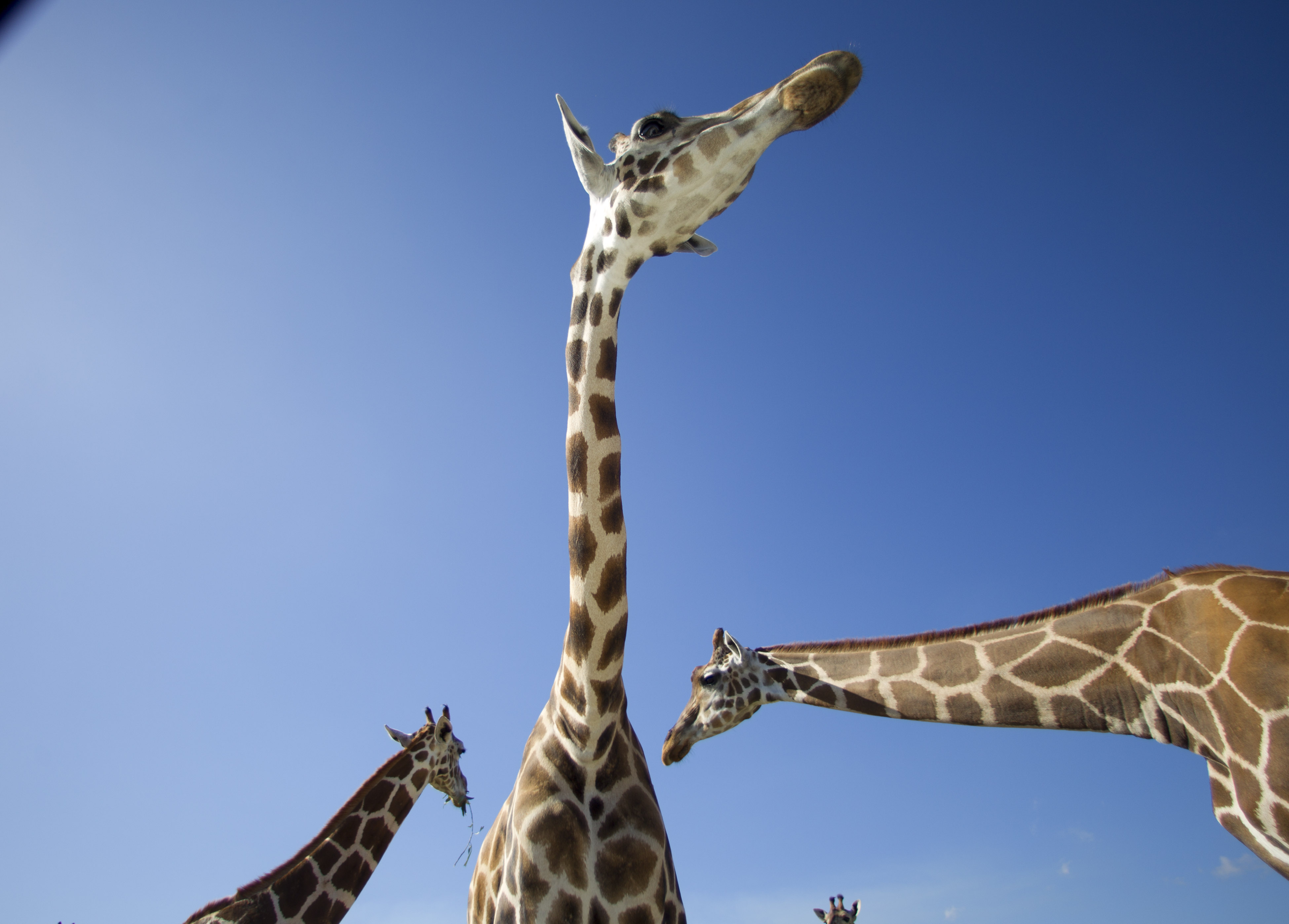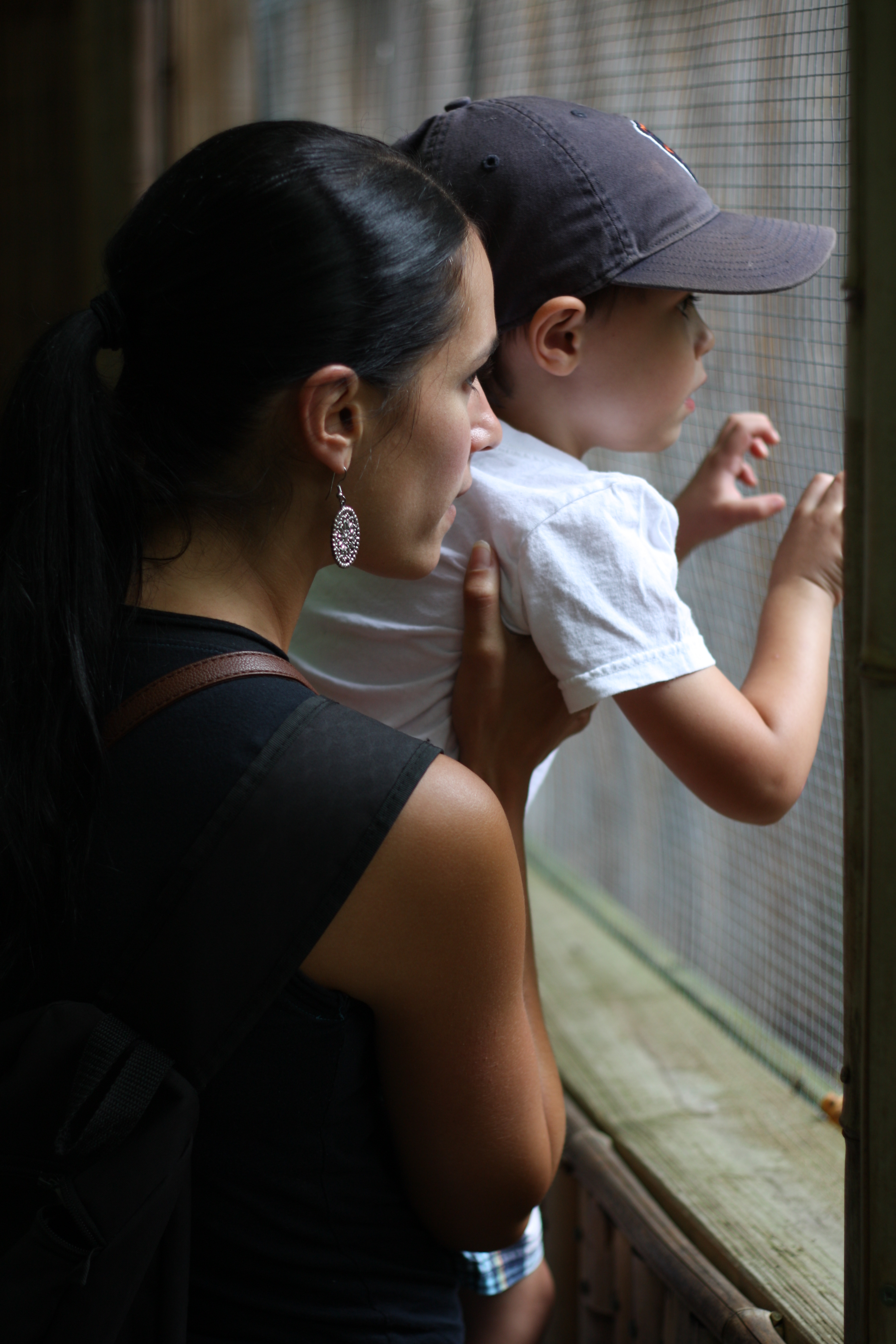VIDEO
This story is featured in today's TimesFreePress newscast.
CHATTANOOGA ZOO BY THE NUMBERS* 150,095: Visitors in 2012* 860: Animals at the zoo, including 293 Kihansi spray toads* 14: Zoo acreage$1.9 million: Annual budget* 75: Years in operation as of 2012Source: Chattanooga ZooWHO HAS WHATOf 222 AZA-accredited zoos, here's how many house some of the most popular zoo animals:Giraffes: 101Elephants: 69Lions: 99Tigers: 112Source: Association of Zoos and Aquariums
Stroll down the pavement that travels from barnyard goats to dreadful Komodo dragons and you'll see 2-foot toddlers pressing their noses against glass. Moms lift babies to get a peek, strollers clutter the walkways and kids run, pulling parents forward to see animals as common as turkey, pot-bellied pigs and deer.
But administrators of the Chattanooga Zoo at Warner Park want children to look up, too.
Even with some 800 animals, the zoo has never had a big marquee exhibit like those big cities can boast. Lions. Elephants. Tigers. Giraffes. Those are the real magnets, exhibits that would help the zoo keep its footing in a tourist town with a sea of local attractions, the mammoth Tennessee Aquarium included.
So officials plan to bring in something rare, something that will drive ticket sales -- giraffes -- and hope a few specimens of the world's tallest mammal will take the zoo to, well, new heights.
"We believe that expansion of the Chattanooga Zoo to accommodate giraffes would take the zoo to the next level in terms of attendance and notoriety," said zoo spokeswoman Marisa Ogles. "Giraffes will be one of the zoo's signature icon animals that people see immediately upon their entrance to the zoo."
The giraffe exhibit, still in the conceptual stage, will cost an estimated $4 million to $6 million to build -- far outpacing the zoo's annual budget of about $1.9 million. Fundraising could take years, but zoo officials hope to bid out the design of the structure in the coming months. Another potential obstacle is the zoo's size, just 14 acres with little option for expansion. But the zoo says it has the 40,000 square feet -- just under an acre -- needed for the exhibit.
Adding giraffes is the next step in the zoo's decades-long transformation from a few cages in Warner Park in the 1930s to a destination for families and school trips. But growth has been bumpy. Between the late fall of 2010 and early winter of 2011, 10 animals died there. In months leading up to and just following the deaths, the U.S. Department of Agriculture documented 21 items of "noncompliance," including problems with enclosure designs and not having enough feed on hand. And in July, the zoo was forced to temporarily close mammal exhibits after failing to get paperwork into the USDA on time.
But by August 2011, USDA inspections came back clean and compliant. And now, after several positive inspections, zoo leaders say they're gearing up for the next decade of growth.
These changes are taking place amidst a global transition for zoos. Those that are publicly funded have struggled to make ends meet, so they've found new streams of revenue beyond just ticket and concession sales. And all zoos, aquariums and safari parks are evolving to maintain relevance in the 21st century. It's not uncommon now to offer behind-the-scenes tours, animal feeding and after-hours excursions.
"People want to know more and they want to get close," said Steve Feldman, spokesman for the Association of Zoos and Aquariums, a trade group with 222 member zoos and aquariums. "We say we want people to get close enough to care."
Chattanooga's zoo is no different. Already there are $5 camel rides, and swanky events like October's Banana Ball, which can cost as much as $150 a ticket. The proposed giraffe exhibit will allow for even more intimate experiences. For a few extra dollars, visitors will be able to hand-feed the long-necked creatures.
"You can look at the giraffe eye to eye. You can get this close to a giraffe," zoo consultant David Walsh said in a presentation to Hamilton County commissioners this month. "We believe that this will not only be an attendance driver and an economic development engine, but if you really want to affect people's minds and hearts in an educational way outside the classroom, creating that kind of contact is the way to do it."
Walsh, who was hired to help create a master plan for the Chattanooga Zoo, said giraffe feeding has become a lucrative add-on at many zoos -- it generally brings in between $100,000 and $200,000 a year, he said.
Of the 222 AZA-accredited institutions, about half have giraffes on display.
And while the spindly-looking towers may seem fragile, they actually don't require much specialized care beyond what other zoo animals need, said Andy Blue, associate curator of mammals at the San Diego Zoo Safari Park, a 2,000-acre park about 50 minutes north of San Diego's storied zoo.
Giraffe require taller barns and need routine medical care. But they rarely have complications with birth. They breed easily and are easily mixed with other animals like gazelles, wildebeests and zebras.
"They really don't bother other animals," Blue said. "They're almost aloof."
The safari park houses its herd of 16 giraffes on an expansive field where visitors can ride safari trams or caravans to get up close. Even with a 60-acre field, Blue said the giraffes often congregate in the center of the enclosure. So even though giraffes are 16 feet tall, they rarely need huge exhibits.
And as far as marquee animals go, giraffes are hard to beat.
"They're very popular exhibits with the public. It's a species that people like to see," said zoo consultant Alan Seronin. "They like to have pictures taken with them. And they really like feeding the giraffe."
Seronin, formerly the curator of carnivores and large mammals at Cleveland Metroparks Zoo in Ohio, said this hands-on approach to zoos may seem new. But in reality, it's been a cyclical change. Decades ago, petting zoos were popular. And it wasn't uncommon for visitors to toss all sorts of food to zoo animals. People threw marshmallows to monkeys and dog biscuits to bears.
Then animal feeding was all but banned at many zoos for safety and dietary concerns.
But now it's coming back, although in a way more controlled and better suited for each animal's diet, Seronin said.
"There was this evolution, particularly for the feeding of animals," he said.
In the world of zoos, bigger animals often draw more attention and, thus, dollars. Seronin said elephants, giraffes, pandas, sea lions, stingrays and sharks are some of the most popular.
"I think there are certain animals that people go to the zoo and expect to see," he said. "If they're not very colorful, they're not very active and people don't know about them, then people tend not to care about them."
And as today's children grow more active and engaged than ever, Seronin said zoos are being forced to adapt. Kids want to touch the animals, get up close and be a part of the action.
"Things move awful quick today," he said. "And to just walk around a park and see animals is maybe not so exciting for them."
Contact staff writer Kevin Hardy at khardy@timesfree press.com or 423-757-6249.


